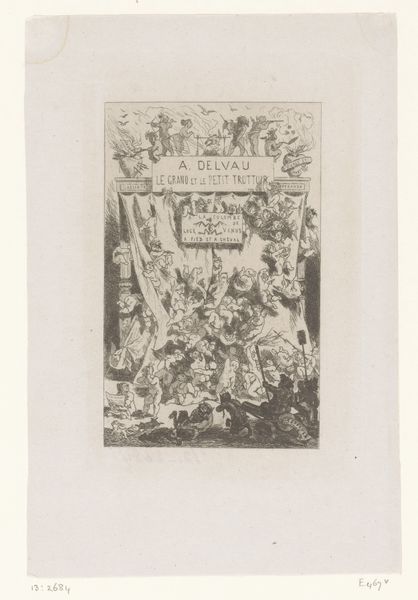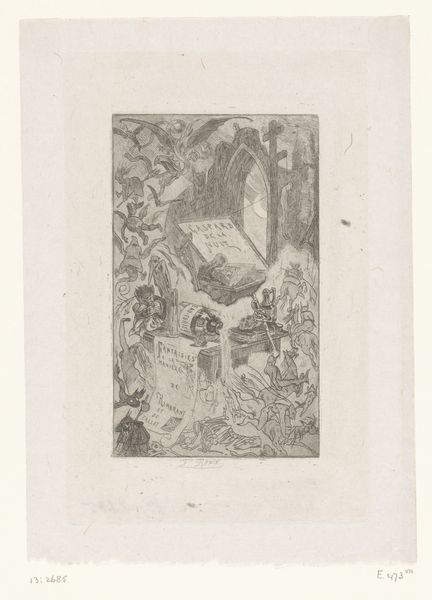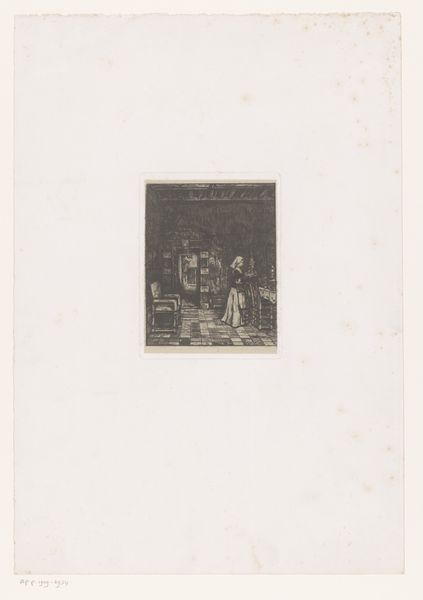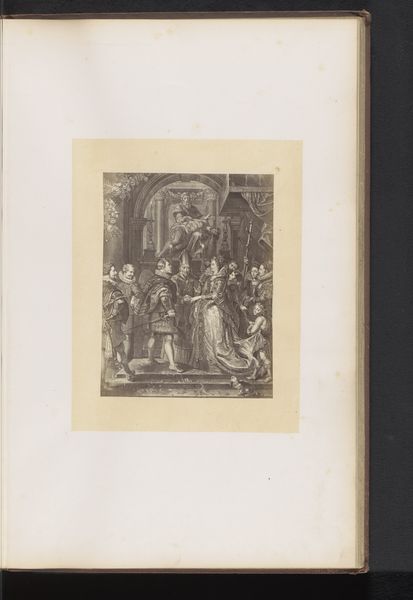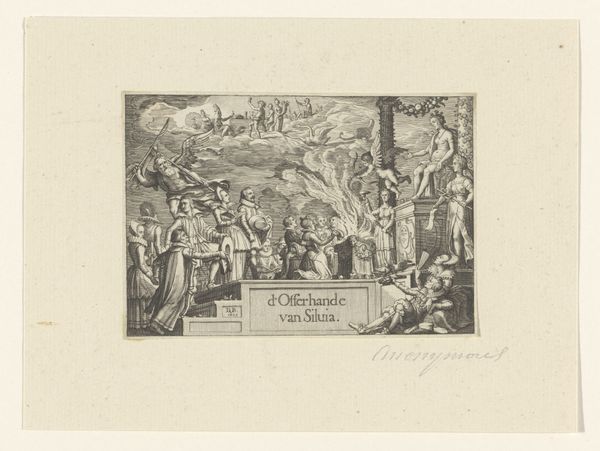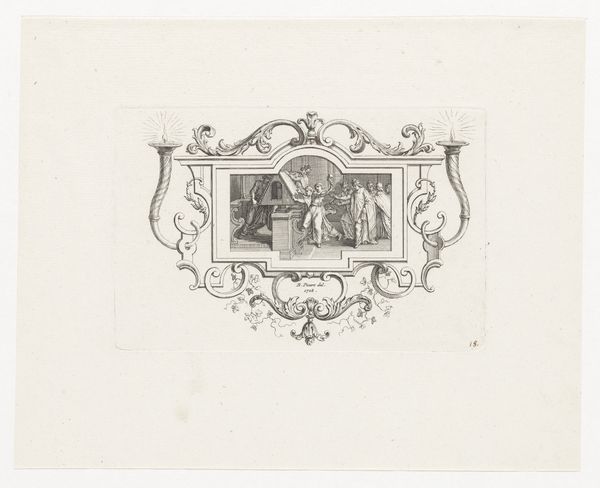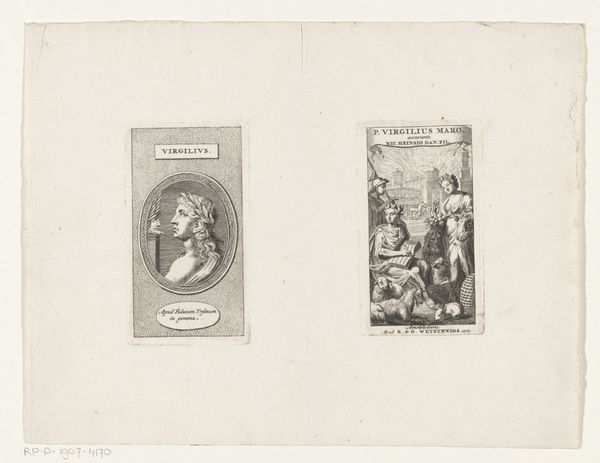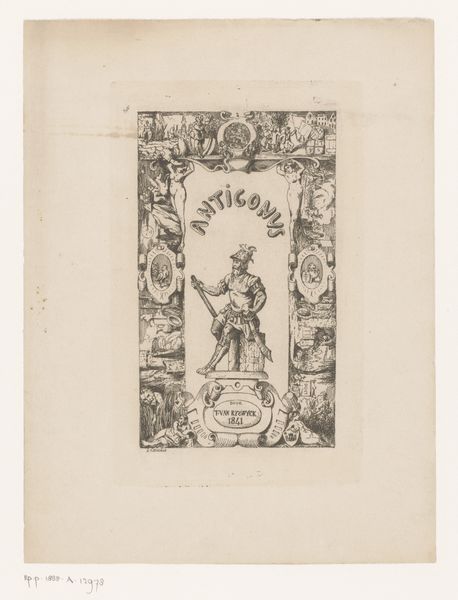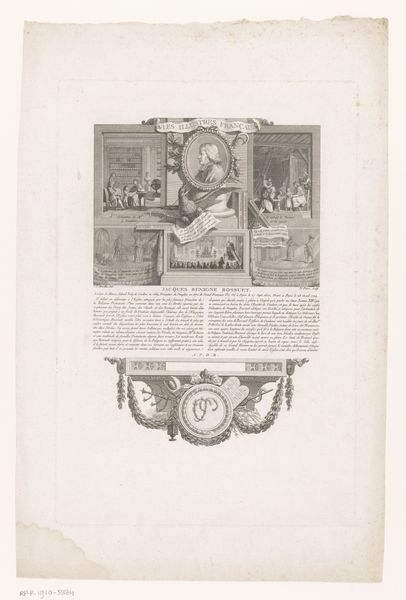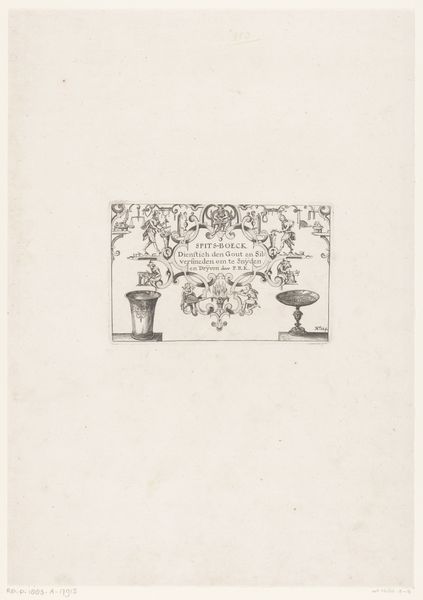
print, etching, paper, engraving
#
portrait
#
narrative-art
#
ink paper printed
# print
#
etching
#
old engraving style
#
white palette
#
paper
#
history-painting
#
engraving
#
monochrome
Dimensions: height 177 mm, width 120 mm
Copyright: Rijks Museum: Open Domain
Curator: The somber, almost austere nature of this black and white etching strikes me immediately. What is it? Editor: This is "Herdenkingsprent voor Theresia van Camp" a commemorative print honoring Theresia van Camp, made between 1881 and 1909 by Jean-Baptiste Anthony. The print combines engraving and etching on paper, a fascinating blend of techniques. Curator: Commemorative... it's a very formal, constructed presentation. The portrait at the top is surrounded by heraldry and the text is laid out like a formal announcement. What was her significance? Editor: Theresia van Camp seems to have been a notable figure within her community. The text below her portrait refers to her “fifty-year Jubilee," perhaps within a religious order or charitable organization, or as a member of an important association within her community. These prints often served not only as memorials but also as a way to reinforce social values and hierarchies. Curator: Look at the panel at the bottom - a woman surrounded by children. Is she bestowing charity? Considering the period and likely social context, is this also about constructing a particular image of womanhood, perhaps of maternal benevolence? Editor: Precisely. This imagery reinforces traditional roles, framing her legacy within a very specific and potentially limiting narrative. The choice to depict her engagement with children promotes particular ideals. Further the use of the etching technique lends the work itself to reproducibility within that period. It acts as both commemoration and promotion. Curator: How do the institutional forces, like religious organizations or social clubs, play a role in shaping this imagery, in selecting how she's remembered and the values promoted through that memory? What did this symbolism mean in that time? Editor: Those are critical questions. Examining records and archives of the period is crucial for deciphering the deeper socio-political influences. The artist here certainly served those in power. Curator: This image leaves me pondering about who has the power to shape historical narratives. It challenges viewers to explore the multiple interpretations behind one piece, one moment in time. Editor: Indeed. These prints often open unexpected windows into the past and prompt us to consider whose stories get told, and how.
Comments
No comments
Be the first to comment and join the conversation on the ultimate creative platform.
